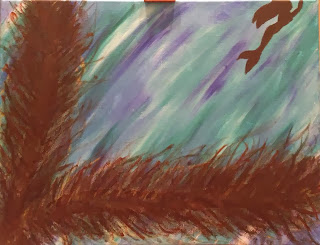
What did you learn from these conversations with Anthony Capps? Project Based Learning Part 1: Experience of a 3rd Grade Teacher:
Anthony provided some great and valuable information in this video. When utilizing Project Based Learning in the classroom, teachers should create projects that are driven by content, include the interests of students, and are catered to an authentic audience. When teachers allow their students freedom of choice when it comes to picking their own projects, the students will be more self-motivated. This freedom to select a topic they will actually be interested in will help to facilitate a greater desire to learn. Anthony also pointed out the most important part of Project Based Learning: giving students the opportunity to reflect and revise. A great way for teachers to go about this would be to use peer review, allowing students to reflect on their own work, and others, and then revising it based on the suggestions and corrections made by their peers.
Project Based Learning Part 2: Experience of a 3rd Grade Teacher
During this video, Anthony also shed some light on the fact that teachers need to be aware that not every project is going to yield outstanding and perfect results. There is on such thing as a perfect project, and teachers need to keep this thought in mind as they plan what project for their students to complete. Back-up plans should always be at the ready, just in case the moment arises when a project does not turn out as well as one might have hoped. The main point I received from Anthony in this video is to not, intentionally or unintentionally, put limits on students. Limits placed on students have the potential to drastically hinder a student's learning capabilities. If students don't have limits placed upon them, then their potential to learn, and to have fun doing it, it limitless. When teachers create a positive learning environment, students will have a greater chance of being successful. When students are successful, they are proud of their work and will have a higher self-confidence.
iCurio
iCurio is a great tool that allows students to safely and efficiently search the web for educational material. Web pages and all of their content, videos and pictures alike, are curated and are monitored to ensure their material is appropriate for students.
Discovery Education
Discovery Education is a science and social studies database. Teachers can utilize this database to create interactive lessons for their students. Students can remember material more efficiently when teachers use visual aids and if teachers are able to teach with these interactive lessons. Discovery Education will definitely be a tool that I would implement in my classroom.
The Anthony-Strange List of Tips for Teachers Part 1
The best tip from Anthony and Dr. Strange was that teachers absolutely and without a doubt have to be interested in learning. Students are not the only ones who are learning in the classroom, learning is also a major part of a teacher's life. If a teacher has no interest in expanding their knowledge banks, and learning new techniques in how to best approach their students, then those teachers should find a new profession. As a teacher, I plan to have my students "think outside the box". When students think outside the box, they go beyond the norm and branch out into deeper waters. Questions will be asked that would stimulate the teacher's desire to learn, thus expanding his or her own knowledge bank. Another great tip from Anthony and Dr. Strange was thinking of your desired outcome when planning a project for your students, but as stated earlier, without limiting the students. No one wants to put a damper on a student's learning.
Don't Teach Tech - Use It
I have always felt the best way to teach students is through hands-on experience. This can definitely be seen through "Don't Teach Tech - Use It". In our constantly changing educational world, and the "real world", technology is all around us. Just about everyone in our society, even young children, know how to use some form of technology. The time has come for technology to be necessary in the classroom. However, teachers need to use the technology in their classrooms, not teach it. I feel that it's simple as that. When it's included in the classroom and included in the lessons, the daily exposure will be a great way to teach the technology to their students.
Additional Thought About Lessons
Anthony made the comment that lessons are at least "four layers thick": year, unit, breaking it down, and daily. Lessons are formed based on Standards and have to be completed within the school year. Those lessons have to be planned accordingly and be easily broken down into units of time to complete the lessons within, and then broken into days within the unit lesson. Having this "four layer" formula is essential for any teacher.






